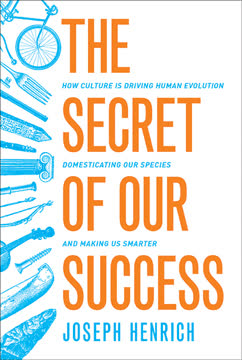मुख्य निष्कर्ष
1. हमारे पास छिपे हुए उद्देश्य होते हैं जो अक्सर हमारे कहे गए कारणों के विपरीत होते हैं
हम, मानव जाति, एक ऐसी प्रजाति हैं जो न केवल छिपे हुए उद्देश्यों पर कार्य करने में सक्षम है—हम इसे करने के लिए डिज़ाइन किए गए हैं।
विकासात्मक उत्पत्ति। मानवों का विकास संसाधनों, साथी और सामाजिक स्थिति के लिए प्रतिस्पर्धा करने के लिए हुआ। इससे जटिल सामाजिक व्यवहार और प्रेरणाओं का विकास हुआ जो अक्सर हमारी जागरूकता के नीचे काम करते हैं। हमारा मस्तिष्क स्वार्थ को आगे बढ़ाने में कुशल है जबकि एक साथ एक सामाजिक छवि बनाए रखता है।
विपरीत व्यवहार। हम अक्सर ऐसे तरीकों से कार्य करते हैं जो हमारे कहे गए कारणों के विपरीत होते हैं:
- नीतियों के आधार पर मतदान करने का दावा करना, लेकिन एक उम्मीदवार की उपस्थिति से प्रभावित होना
- पर्यावरण की मदद के लिए हरे उत्पाद खरीदने पर जोर देना, जबकि हम अक्सर स्थिति से प्रेरित होते हैं
- चैरिटी के लिए पूरी तरह से परोपकारी उद्देश्यों का दावा करना, जबकि सामाजिक मान्यता की तलाश करना
इन छिपे हुए उद्देश्यों को समझना मानव स्वभाव में अंतर्दृष्टि प्रदान कर सकता है और प्रतीत होने वाले असंगत या तर्कहीन व्यवहारों को समझाने में मदद कर सकता है। अपने मस्तिष्क में हाथी को स्वीकार करके, हम खुद को और दूसरों को बेहतर समझ सकते हैं।
2. हमारा मस्तिष्क हमें धोखा देता है ताकि हम दूसरों को अधिक प्रभावी ढंग से धोखा दे सकें
हम खुद को धोखा देते हैं ताकि दूसरों को धोखा देने में बेहतर हो सकें।
योजनाबद्ध आत्म-धोखा। हमारा मस्तिष्क न केवल दूसरों को धोखा देता है; यह हमें भी धोखा देता है। यह आत्म-धोखा एक रणनीतिक उद्देश्य की सेवा करता है: यह हमें दूसरों को धोखा देने में अधिक विश्वसनीय बनाता है। यदि हम अपने झूठों पर सच में विश्वास करते हैं, तो हम धोखे के स्पष्ट संकेत प्रदर्शित करने की संभावना कम रखते हैं।
आत्म-धोखा विभिन्न तरीकों से प्रकट होता है:
- अपनी क्षमताओं और सकारात्मक गुणों का अधिक आकलन करना
- ऐसी जानकारी को याद रखना जो हमारे विश्वासों का समर्थन करती है
- अपने कार्यों को महान उद्देश्यों के साथ तर्कसंगत बनाना
यह आत्म-धोखा कोई दोष नहीं है, बल्कि मानव संज्ञान का एक विशेषता है। यह हमें जटिल सामाजिक वातावरण में अधिक प्रभावी ढंग से नेविगेट करने की अनुमति देता है, आत्मविश्वास प्रदर्शित करने, सामाजिक बंधनों को बनाए रखने और संज्ञानात्मक असंगति से बचने में मदद करता है। हालाँकि, यह पूर्वाग्रहित निर्णय लेने की ओर भी ले जाता है और यदि अनियंत्रित छोड़ दिया जाए तो व्यक्तिगत विकास में बाधा डाल सकता है।
3. शरीर की भाषा और हंसी हमारे असली सामाजिक इरादों को प्रकट करती हैं
एक झपकी का अर्थ इस पर निर्भर करता है कि यह सामान्य ज्ञान नहीं है।
गैर-मौखिक संचार। शरीर की भाषा और हंसी अक्सर हमारे असली इरादों और भावनाओं को प्रकट करती हैं, भले ही हम उन्हें छिपाने की कोशिश करें। ये अनैच्छिक संकेत हमारे आंतरिक राज्यों और सामाजिक प्रेरणाओं के ईमानदार संकेतक के रूप में विकसित हुए हैं।
गैर-मौखिक संचार के प्रमुख पहलू:
- प्रभुत्व या समर्पण का संकेत देने वाले आसन और इशारे
- भावनाओं को प्रकट करने वाले चेहरे के भाव
- रुचि या असुविधा को दर्शाने वाले आंखों के संपर्क के पैटर्न
- सामाजिक बंधन के तंत्र और खेल के संकेत के रूप में हंसी
इन संकेतों को समझना सामाजिक गतिशीलता और व्यक्तिगत प्रेरणाओं में मूल्यवान अंतर्दृष्टि प्रदान कर सकता है। गैर-मौखिक संकेतों पर ध्यान देकर, हम अक्सर यह जान सकते हैं कि लोग वास्तव में क्या मतलब रखते हैं, चाहे वे जो कहें। यह ज्ञान व्यक्तिगत संबंधों, पेशेवर इंटरैक्शन और सामाजिक कौशल में सुधार के लिए लागू किया जा सकता है।
4. बातचीत सूचना के आदान-प्रदान से परे छिपे हुए सामाजिक कार्य करती है
हम वास्तव में बोलने के लिए इतने उत्सुक हैं कि हमें बातचीत की शिष्टाचार के मानदंडों के माध्यम से अपनी प्रवृत्तियों को नियंत्रित करना पड़ता है।
सामाजिक संकेत। जबकि हम अक्सर बातचीत को मुख्य रूप से सूचना के आदान-प्रदान के रूप में सोचते हैं, यह कई छिपे हुए सामाजिक कार्यों की सेवा करती है। इनमें स्थिति स्थापित करना, गठबंधन बनाना और संभावित साथियों या सहयोगियों के रूप में अपनी मूल्य को प्रदर्शित करना शामिल है।
बातचीत के छिपे हुए कार्य:
- बुद्धिमत्ता और ज्ञान का संकेत देना
- सामाजिक बंधनों और समूह की सदस्यता की स्थापना
- स्थिति और शक्ति गतिशीलता का मोलभाव करना
- वांछनीय गुणों का अप्रत्यक्ष विज्ञापन करना
इन छिपे हुए कार्यों को पहचानना हमें सामाजिक स्थितियों को अधिक प्रभावी ढंग से नेविगेट करने में मदद कर सकता है। यह समझाता है कि लोग अक्सर सुनने की तुलना में बोलने में अधिक रुचि क्यों रखते हैं, और क्यों बातचीत अक्सर केवल सूचना के आदान-प्रदान से भटक जाती है। सामाजिक खेल को समझकर, हम संबंध बनाने और दूसरों को प्रभावित करने में अधिक कुशल हो सकते हैं।
5. उपभोग और चैरिटी संकेत देने और स्थिति की खोज से प्रेरित होते हैं
मानव एक अजीब प्रजाति हैं। हम अपेक्षाकृत बालहीन हैं, हम अपने पिछले पैरों पर चलते हैं, हम नाचते और गाते हैं जैसे कोई बात नहीं।
प्रमुख व्यवहार। हमारे उपभोग और चैरिटी का अधिकांश व्यवहार दूसरों को सकारात्मक गुणों का संकेत देने की इच्छा से प्रेरित होता है। हम अक्सर ऐसे उत्पादों और कारणों का चयन करते हैं जो हमें अपनी संपत्ति, स्वाद, बुद्धिमत्ता या नैतिक गुणों का विज्ञापन करने की अनुमति देते हैं।
उपभोग और चैरिटी के माध्यम से संकेत देने के उदाहरण:
- संपत्ति और स्थिति प्रदर्शित करने के लिए लक्जरी सामान खरीदना
- सामाजिक जागरूकता दिखाने के लिए ट्रेंडी कारणों का समर्थन करना
- सार्वजनिक रूप से दान करना ताकि मान्यता और प्रशंसा प्राप्त हो सके
- पर्यावरणीय जागरूकता का संकेत देने के लिए "हरे" उत्पादों का चयन करना
इन प्रेरणाओं को समझना हमें अपने खर्च और दान के बारे में अधिक सूचित निर्णय लेने में मदद कर सकता है। यह यह भी समझाता है कि लोग अक्सर प्रतीत होने वाले तर्कहीन या बर्बाद करने वाले व्यवहारों में क्यों संलग्न होते हैं। इन कार्यों के सामाजिक लाभों को पहचानकर, हम उपभोक्ता प्रवृत्तियों और परोपकारी पैटर्न को बेहतर समझ सकते हैं।
6. कला और धर्म फिटनेस प्रदर्शनों और समूह बंधन तंत्र के रूप में विकसित हुए
कला मूल रूप से हमारे अस्तित्व के अधिशेष का विज्ञापन करने में मदद करने के लिए विकसित हुई और, उपभोक्ता के दृष्टिकोण से, दूसरों के अस्तित्व के अधिशेष का आकलन करने के लिए।
विकासात्मक कार्य। कला और धर्म अपने स्पष्ट उद्देश्यों के अलावा महत्वपूर्ण विकासात्मक कार्य करते हैं। कला का विकास आनुवंशिक फिटनेस और रचनात्मकता को प्रदर्शित करने के तरीके के रूप में हुआ, जबकि धर्म समूह बंधन और सामाजिक मानदंडों को लागू करने के तंत्र के रूप में विकसित हुआ।
कला और धर्म के विकासात्मक अनुकूलन के प्रमुख पहलू:
- संज्ञानात्मक और मोटर कौशल का महंगा संकेत के रूप में कला
- समूह की प्रतिबद्धता के प्रदर्शन के रूप में धार्मिक अनुष्ठान
- साझा विश्वास और प्रथाएँ सामाजिक एकता को बढ़ावा देती हैं
- मानदंड प्रवर्तन के उपकरण के रूप में अलौकिक अवधारणाएँ
इस दृष्टिकोण से कला और धर्म को देखना मानव समाजों में उनकी सार्वभौमिक उपस्थिति और उनके शक्तिशाली भावनात्मक प्रभावों को समझाने में मदद करता है। यह यह भी स्पष्ट करता है कि ये क्षेत्र अक्सर तर्कसंगत विश्लेषण को क्यों चुनौती देते हैं और क्यों वे आधुनिक जीवन में महत्वपूर्ण भूमिकाएँ निभाते रहते हैं।
7. शिक्षा और चिकित्सा के छिपे हुए कार्य हैं जो सीखने और उपचार से परे हैं
स्कूल जो अनुशासन और रैंकिंग से भरे होते हैं, छात्रों को आधुनिक कार्यस्थलों में सामान्य अनुशासन और रैंकिंग के लिए अनुकूलित कर सकते हैं।
सामाजिक संस्थाएँ। शिक्षा और चिकित्सा अपने घोषित लक्ष्यों के अलावा महत्वपूर्ण सामाजिक कार्य करती हैं, जो ज्ञान प्रदान करना और स्वास्थ्य में सुधार करना है। इन छिपे हुए कार्यों में संकेत देना, सामाजिककरण और सामाजिक व्यवस्था बनाए रखना शामिल है।
शिक्षा और चिकित्सा के छिपे हुए कार्य:
- शिक्षा को प्रमाणन और छंटाई तंत्र के रूप में
- स्कूलों को सामाजिक मानदंडों और आज्ञाकारिता को स्थापित करने के संस्थानों के रूप में
- चिकित्सा देखभाल को सामाजिक समर्थन और देखभाल का प्रदर्शन करना
- स्वास्थ्य व्यवहार को स्थिति और आत्म-नियंत्रण के संकेत के रूप में
इन छिपे हुए कार्यों को पहचानना हमें यह समझने में मदद कर सकता है कि ये संस्थाएँ कभी-कभी क्यों अप्रभावी या परिवर्तन के प्रति प्रतिरोधी लगती हैं। यह यह भी अंतर्दृष्टि प्रदान करता है कि हम उन्हें कैसे सुधार सकते हैं ताकि वे अपने घोषित उद्देश्यों को बेहतर ढंग से पूरा कर सकें जबकि उनके सामाजिक भूमिकाओं को स्वीकार करते हुए।
8. हमारे राजनीतिक व्यवहार जनजातीय वफादारियों द्वारा अधिक आकारित होते हैं न कि आदर्शों द्वारा
राजनीति एक टीम खेल है।
जनजातीय राजनीति। हमारे राजनीतिक व्यवहार अक्सर जनजातीय वफादारियों और संकेत देने द्वारा अधिक प्रेरित होते हैं न कि नीतियों या आदर्शों पर तर्कसंगत विचार द्वारा। हम अपने सामाजिक समूहों के विश्वासों को अपनाने की प्रवृत्ति रखते हैं और राजनीतिक दृष्टिकोणों का उपयोग अपने समूह की सदस्यता को प्रदर्शित करने के लिए करते हैं।
जनजातीय राजनीति के प्रकट रूप:
- राजनीतिक पार्टियों के प्रति मजबूत भावनात्मकAttachments बनाना
- ऐसी जानकारी को अस्वीकार करना जो हमारे समूह के विश्वासों के विपरीत हो
- सामाजिक संबंधों के लिए राजनीतिक दृष्टिकोणों का उपयोग करना
- सद्गुण का संकेत देने के लिए प्रदर्शनात्मक सक्रियता में संलग्न होना
राजनीति की जनजातीय प्रकृति को समझना ध्रुवीकरण, गलत सूचना की स्थिरता, और तर्कसंगत तर्क के माध्यम से लोगों के विचारों को बदलने में कठिनाई को समझाने में मदद कर सकता है। यह साझा पहचान और मूल्यों पर ध्यान केंद्रित करके राजनीतिक विभाजनों को पाटने के लिए रणनीतियों का सुझाव भी देता है।
9. छिपे हुए उद्देश्यों को स्वीकार करना आत्म-जागरूकता और संस्थानों में सुधार कर सकता है
भाग I से सबसे बड़ा सबक यह है कि हम हाथी को नजरअंदाज करते हैं क्योंकि ऐसा करना रणनीतिक है।
स्व-सुधार और सुधार। हमारे छिपे हुए उद्देश्यों को पहचानना हमें अधिक आत्म-जागरूकता और व्यक्तिगत और संस्थागत निर्णय लेने में अधिक प्रभावी बना सकता है। अपने व्यवहार के असली प्रेरकों को समझकर, हम अधिक सूचित विकल्प बना सकते हैं और बेहतर प्रणालियाँ डिजाइन कर सकते हैं।
छिपे हुए उद्देश्यों को स्वीकार करने के लाभ:
- बेहतर आत्म-समझ और व्यक्तिगत विकास
- अधिक प्रभावी संचार और संबंध निर्माण
- बेहतर डिज़ाइन की गई संस्थाएँ जो वास्तविक मानव व्यवहार को ध्यान में रखती हैं
- दूसरों के कार्यों की अधिक सहानुभूति और समझ
हालांकि अपने छिपे हुए उद्देश्यों का सामना करना असहज हो सकता है, लेकिन यह अंततः जीवन के प्रति एक अधिक ईमानदार और प्रभावी दृष्टिकोण की ओर ले जाता है। इस ज्ञान को अपनाकर, हम अपने कार्यों को अपने कहे गए मूल्यों के साथ संरेखित करने और ऐसी संस्थाएँ बनाने की दिशा में काम कर सकते हैं जो मानव आवश्यकताओं को बेहतर ढंग से पूरा करें।
अंतिम अपडेट:
FAQ
What's The Elephant in the Brain about?
- Exploring hidden motives: The book examines the unconscious motives driving human behavior, often unacknowledged, referred to as "the elephant in the brain."
- Self-deception and social norms: It discusses how self-deception helps individuals appear altruistic while acting in self-interest, and how social norms shape behavior to hide these motives.
- Broad implications: Authors Kevin Simler and Robin Hanson argue that understanding these hidden motives can change perceptions of medicine, education, politics, and more.
Why should I read The Elephant in the Brain?
- Insight into human behavior: The book offers a thought-provoking look at why we act against our stated beliefs, providing a deeper understanding of ourselves and others.
- Challenging conventional wisdom: It confronts uncomfortable truths about human nature, making it compelling for those interested in psychology and sociology.
- Practical applications: Insights can improve interpersonal relationships and enhance situational awareness in social and professional settings.
What are the key takeaways of The Elephant in the Brain?
- Self-deception is strategic: The authors argue that self-deception is a ploy our brains use to look good while behaving badly, hiding true motives.
- Social competition shapes behavior: Humans are competitive social animals, and behaviors are influenced by the desire to signal status and gain social approval.
- Norms regulate behavior: Social norms suppress selfish impulses but can be fragile and easily circumvented, leading to widespread self-deception.
What are the best quotes from The Elephant in the Brain and what do they mean?
- “We deceive ourselves the better to deceive others.” This encapsulates the book's thesis that self-deception masks true motives, manipulating others' perceptions.
- “Human behavior is rarely what it seems—that’s the main lesson here.” It highlights that actions often have hidden motivations, urging readers to look beyond surface explanations.
- “We are social creatures to the inmost centre of our being.” This emphasizes the fundamental role of social dynamics in shaping behavior.
What is the concept of "the elephant in the brain"?
- Metaphorical representation: It refers to significant but unacknowledged aspects of our motives influencing behavior, akin to the "elephant in the room."
- Self-deception mechanism: The metaphor illustrates blindness to selfishness and competitive instincts, distorting perceptions of actions.
- Implications for understanding behavior: Recognizing this "elephant" helps understand complexities of human interactions and underlying motives.
How do social norms influence our behavior according to The Elephant in the Brain?
- Regulating competition: Social norms suppress selfish behavior and promote cooperation, maintaining social order and harmony.
- Fragility of norms: Norms are beneficial but fragile, easily circumvented, leading to self-deception and competitive behavior.
- Examples of norm violations: Individuals often skirt norms in politics and social interactions to pursue self-interest without repercussions.
What role does self-deception play in our lives according to The Elephant in the Brain?
- Coping mechanism: Self-deception protects self-esteem and reduces anxiety by ignoring uncomfortable truths about motives.
- Strategic advantage: It is a tool for navigating social situations and manipulating perceptions, not just a defense mechanism.
- Impacts on decision-making: While beneficial short-term, it often leads to poor decision-making and lack of awareness of true motivations.
How does The Elephant in the Brain relate to competition?
- Inherent competitive nature: Humans are competitive social animals, driven by the desire to gain status and resources in social hierarchies.
- Social signaling: Behaviors like conspicuous consumption and social grooming signal status and intentions, masking true motives.
- Evolutionary perspective: Competition is key in the evolution of intelligence and social structures, with behaviors adapting to social competition.
How does The Elephant in the Brain explain the role of self-deception?
- Mechanism of self-deception: It allows individuals to maintain a positive self-image while acting in self-interest, appearing less selfish.
- Impact on behavior: Creates a disconnect between beliefs and actions, leading to rationalization of choices to align with self-image.
- Social consequences: Can lead to misunderstandings and conflicts in relationships, but recognizing it helps navigate social dynamics.
What insights does The Elephant in the Brain provide about political behavior?
- Loyalty over informed decision-making: Political behavior is driven by loyalty to a group rather than informed choices, signaling group identity.
- Expressive voting: Voting often expresses identity rather than influencing outcomes, aligning with group rather than policy effectiveness.
- Polarization and group identity: Political polarization strengthens group identification, hindering compromise and understanding.
How does The Elephant in the Brain address charitable behavior?
- Charity as a signal: Charitable giving often signals wealth and prosocial orientation, enhancing social standing rather than purely helping others.
- Warm glow effect: Satisfaction from giving can overshadow actual impact, highlighting emotional rewards of charitable behavior.
- Inefficiencies in giving: Preference for well-known charities reflects desire for recognition and social credit over maximizing impact.
What does The Elephant in the Brain say about the rituals of synchrony?
- Definition of rituals of synchrony: Coordinated activities like singing and dancing foster social bonds among participants.
- Psychological benefits: Enhance cooperation and trust within groups, strengthening community ties.
- Religious and cultural significance: Rituals of synchrony in traditions build social cohesion through shared experiences.
समीक्षाएं
दिमाग में हाथी अपनी गुप्त मानव प्रवृत्तियों की गहन खोज के लिए मुख्यतः सकारात्मक समीक्षाएँ प्राप्त करता है। पाठक इसकी सरल लेखन शैली और आत्म-धोखे तथा सामाजिक संकेतों के बारे में विचारोत्तेजक विचारों की सराहना करते हैं। पुस्तक में शिक्षा, स्वास्थ्य देखभाल और चैरिटी जैसे विभिन्न क्षेत्रों की जांच की गई है, जो सामान्य व्यवहारों के पीछे छिपे अप्रत्याशित प्रेरणाओं को उजागर करती है। कुछ आलोचक तर्कों को अत्यधिक निराशावादी या वैज्ञानिक कठोरता की कमी मानते हैं, लेकिन अधिकांश सहमत हैं कि यह पुस्तक मानव स्वभाव और सामाजिक संस्थाओं पर एक मूल्यवान दृष्टिकोण प्रस्तुत करती है।
Similar Books














